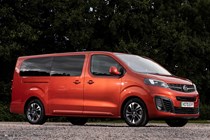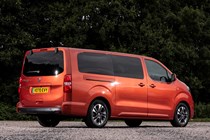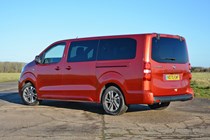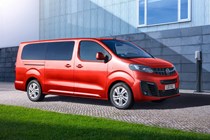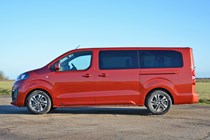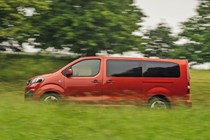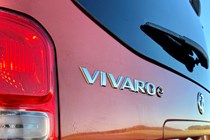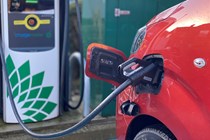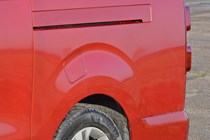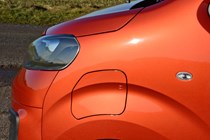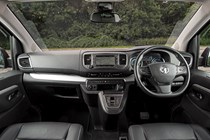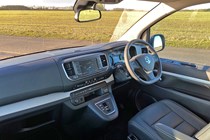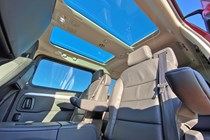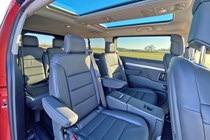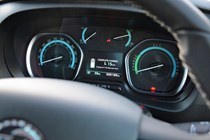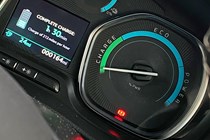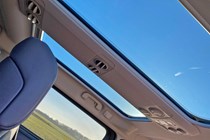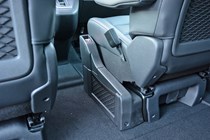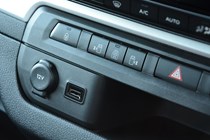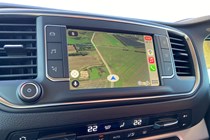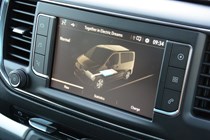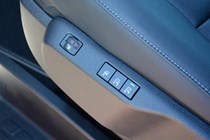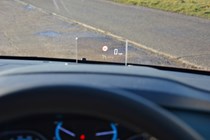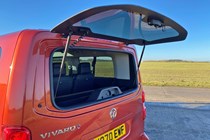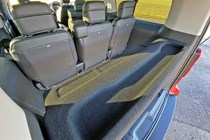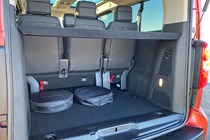
Vauxhall Vivaro-e Life engines, drive and performance
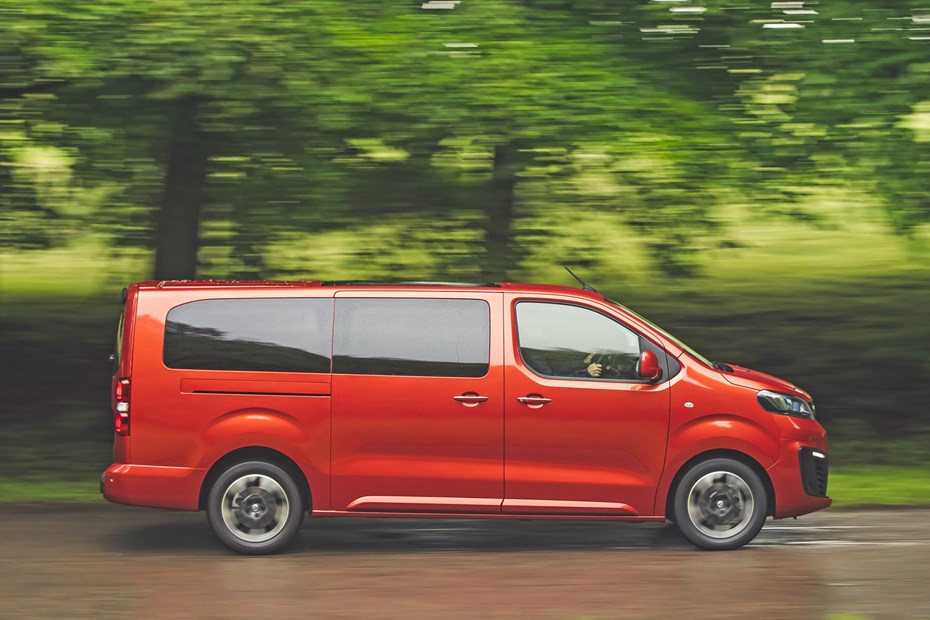
- Single choice of electric motor
- Automatic transmission is standard
- Adequate performance for the type of car
Simplicity is king here. The Vauxhall Vivaro Life Electric is only available with one electric motor. However, you can adjust the maximum power output of the motor using a button on the centre console. There are three setting to choose from.
- Power mode – 136hp, for maximum performance and when carrying heavy loads
- Normal mode – 109hp, for everyday driving where extra performance isn’t needed
- Eco mode – 82hp, uses the least amount of energy
Normal mode is genuinely ample most of the time, even though 109hp sounds like a paltry figure for such a large car. This is because it produces its maximum torque – the pulling power used for acceleration – the moment you press the accelerator.
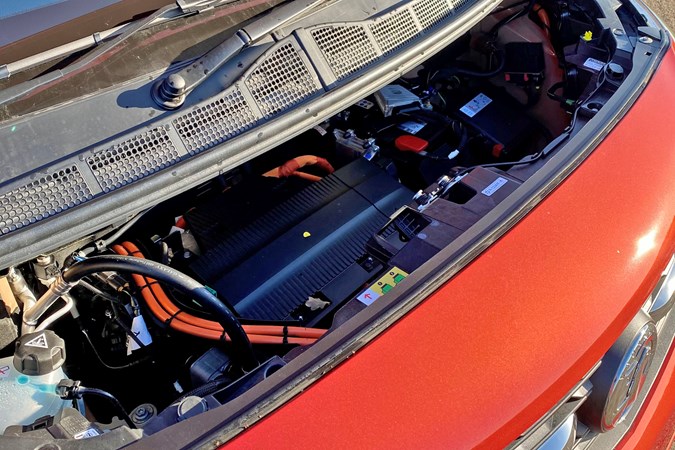
Even in Power mode, the Vivaro doesn’t have the same eye-opening acceleration of a Tesla. Its official 0–62mph time is a rather pedestrian-sounding 13.1 seconds, while its top speed is capped at 81mph to conserve battery power and eke out a few more miles of driving range.
Acceleration is linear and smooth, though. You have plenty of performance to keep up with traffic and, once you’re up to speed, the only indication you have other than the blurry scenery is a high-pitched whirr from the other side of the firewall. It’s very peaceful.
A word to the wise: Eco mode is best saved only for those times when you’ve misjudged how far it is to the next charging point. Functions such as the climate control are dialled down to a minimum to preserve energy, while the accelerator pedal’s barely more responsive than a chunky Labrador asleep by a roaring fire.
The electric motor is mated to a single speed transmission which sends drive to the front wheel. You select the direction you want to travel using a big switch on the dashboard, which Vauxhall calls the e-Toggle.
While there’s little physical effort to pull or push it, if you nudge it too lightly it won’t engage in the direction you desire, still being in reverse when you want to go forwards and vice versa.
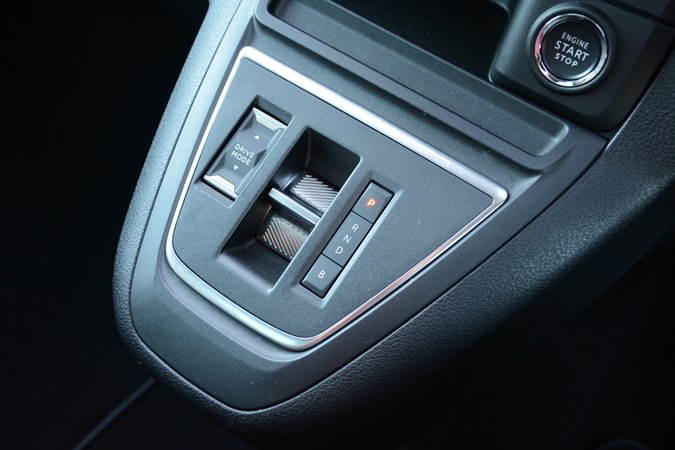
Park is selected by pressing the P button to the right of the e-toggle, with a corresponding one marked B – for Braking – at the opposite end of the panel.
This is the button to press to activate the regenerative braking function, where otherwise wasted energy from slowing down is captured and zapped back into the battery pack.
With it switched off, lifting completely off the Vivaro Life Electric’s accelerator results in a very gradual reduction in speed, but with it on you can do much of your driving without need to dab the brake pedal at all, so effective is the rate of retardation as you lift off.
What’s it like to drive?
- Don’t expect fun, but it handles tidily
- Light controls with little feedback through them
- But still a better choice than the diesel version
If you’ve got this far into the review expecting the electric Vivaro Life to be an utter hoot to drive, then you’ve not been paying attention.
It’s a van that has been repurposed to carry lots of people and their belongings around very efficiently. As such, it’s best experienced when driven gently.
When you’re just pottering around, it doesn’t really matter if the pedals feel a little numb or the steering doesn’t communicate the road surface. So long as they’re attached to the vehicle and they do as they’re told, it’s fine.

That being said, though, we reckon the electric Vivaro is better to drive than the diesel one. Because the heavy batteries are mounted low down in its structure (see, you remembered that bit), it has a low centre of gravity. That makes it more stable and more comfortable, particularly if there are no passengers on board.
How so? Well, firstly it rides with greater assuredness, feeling planted in the way that the diesel doesn’t over rougher surfaces. This gives you much more faith in how the it’ll behave, giving you more confidence to carry more speed through corners.
Additionally, the lower centre of gravity also means the Vivaro-e Life remains more level through corners than its diesel counterpart. That’s something that your passengers will also appreciate.


